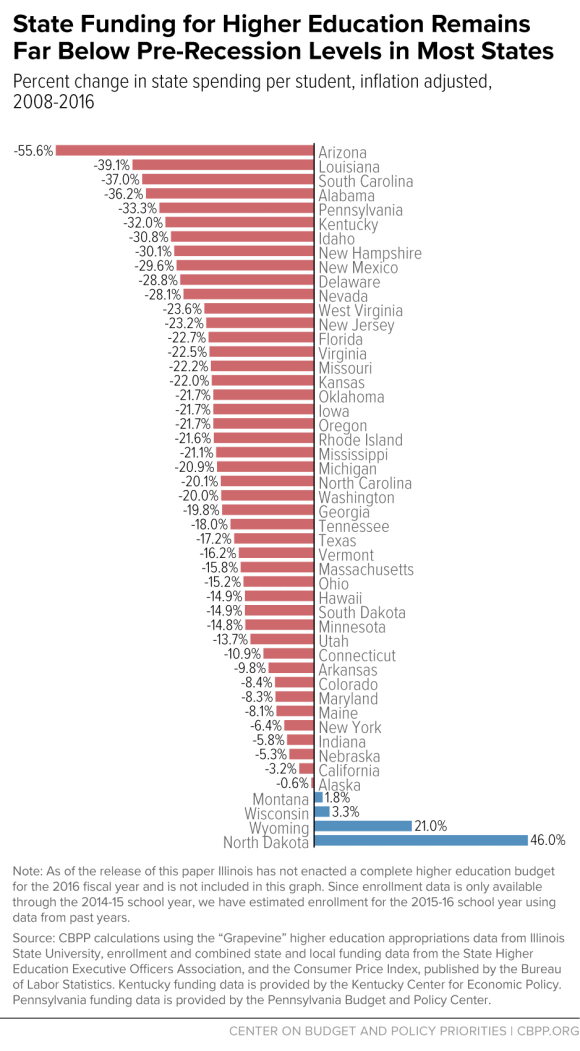BEYOND THE NUMBERS
Years of state funding cuts for public colleges and universities have helped drive up tuition and hurt students’ experiences by forcing faculty cuts, reduced course offerings, and program or department eliminations. Consequently, college has become less affordable and less accessible for students who need degrees to succeed in today’s economy, as we explain in our newly published annual report on state higher education funding.
Though some states have begun to restore some of the deep cuts to public two- and four-year colleges since the recession hit, their support remains far below previous levels. In total, after adjusting for inflation, of the 49 states that have enacted full higher education budgets for the current school year, funding for public two- and four-year colleges is $8.7 billion below what it was just before the recession. (Illinois hasn’t enacted a full budget for 2016.)
We found, after adjusting for inflation:
- Forty-five states — all except Montana, North Dakota, Wisconsin, and Wyoming — are spending less per student in the 2015-16 school year than they did before the recession (see chart).
- The average state is spending $1,525, or 17 percent, less per student than before the recession.
- Per-student funding in eight states — Alabama, Arizona, Idaho, Kentucky, Louisiana, New Hampshire, Pennsylvania, and South Carolina — is down by more than 30 percent since the start of the recession.
- In 11 states, per-student funding fell over the last year. Of these, three states — Arkansas, Kentucky, and Vermont — have cut per-student higher education funding for the last two straight years.
- In the last year, 38 states increased funding per student. Per-student funding rose $275, or 4 percent, nationally.
As states have slashed higher education funding, the price of attending public colleges has risen significantly faster than has median income. For the average student, increases in federal student aid and the availability of tax credits haven’t kept up, jeopardizing the ability of many to afford the college education that’s key to their long-term financial success.
A large and growing share of future jobs will require college-educated workers. Public investment in higher education that would keep quality high and tuition affordable and provide financial aid to students who need it most would help states develop the skilled and diverse workforce they will need to compete for these jobs.
But sufficient public investment can only come if policymakers make sound tax and budget decisions. State revenues have improved significantly since the recession but are still only modestly above pre-recession levels. To make college more affordable and increase access to higher education, many states need to supplement that revenue growth with new revenue — and reject costly tax cuts — to fully make up for years of severe cuts.

